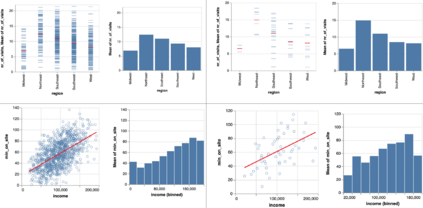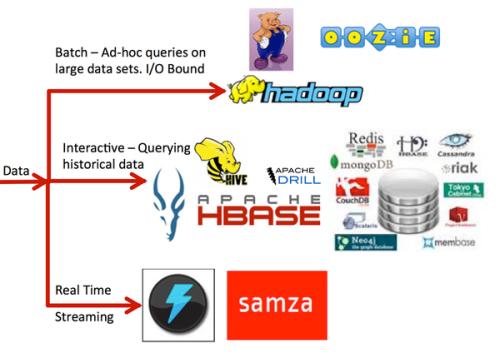Research and development in computer science and statistics have produced increasingly sophisticated software interfaces for interactive and exploratory analysis, optimized for easy pattern finding and data exposure. But design philosophies that emphasize exploration over other phases of analysis risk confusing a need for flexibility with a conclusion that exploratory visual analysis is inherently model-free and cannot be formalized. We describe how without a grounding in theories of human statistical inference, research in exploratory visual analysis can lead to contradictory interface objectives and representations of uncertainty that can discourage users from drawing valid inferences. We discuss how the concept of a model check in a Bayesian statistical framework unites exploratory and confirmatory analysis, and how this understanding relates to other proposed theories of graphical inference. Viewing interactive analysis as driven by model checks suggests new directions for software and empirical research around exploratory and visual analysis. For example, systems should enable specifying and explicitly comparing data to null and other reference distributions and better representations of uncertainty. Implications of Bayesian and other theories of graphical inference should be tested against outcomes of interactive analysis by people to drive theory development.
翻译:计算机科学和统计的研发产生了日益复杂的软件界面,用于互动和探索性分析,最优化的软件界面可以方便地进行模式发现和数据暴露。但设计理论强调在其他分析阶段的探索,从而将灵活性的必要性混为一谈,其结论是:探索性视觉分析本质上是没有模型的,不能正规化。我们描述了在不以人类统计推理理论为根据的情况下,探索性视觉分析的研究会如何导致相互矛盾的界面目标和不确定性的表述,从而可能妨碍用户得出有效的推论。我们讨论了巴伊西亚统计框架中的模型检查概念如何将探索性和确认性分析结合起来,以及这种理解与其他拟议的图形推理理论有何关联。由模型检查驱动的交互式分析提出了围绕探索性和视觉分析的软件和实证研究的新方向。例如,系统应当能够具体和明确地将数据与无效和其他参考分布的数据进行比较,并更好地表述不确定性。Bayesian和其他图形推理理论的影响应当根据人们为理论发展而进行的互动分析的结果加以检验。











